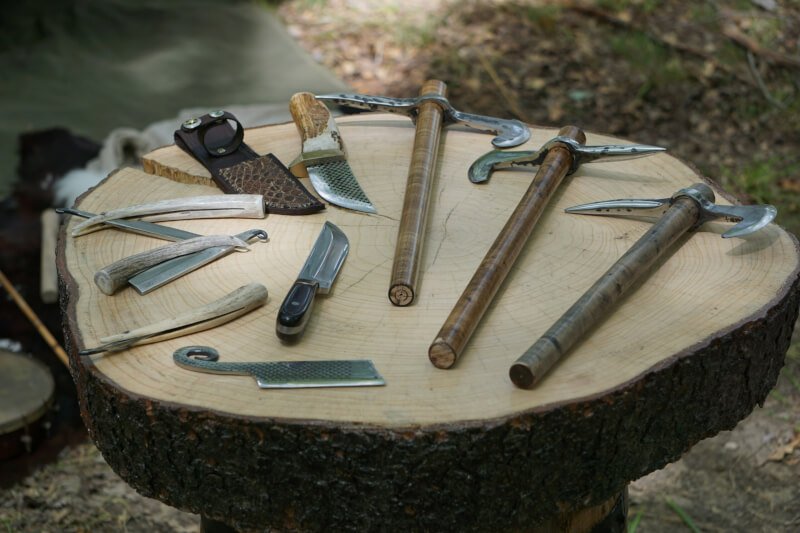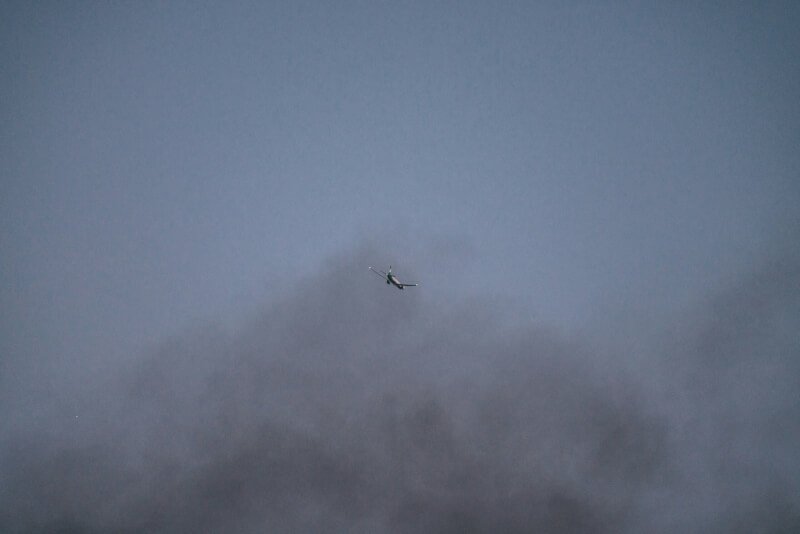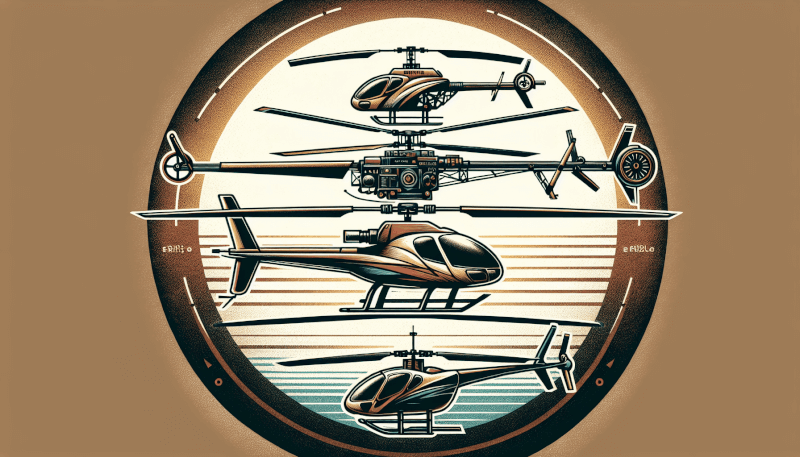Are you in the market for a new RC helicopter? One important consideration to keep in mind is the blade length. The size of the blades can greatly affect the performance and maneuverability of the helicopter. In this article, we will guide you through the process of choosing the right blade length for your RC helicopter, taking into account factors such as skill level, flying conditions, and desired flight characteristics. So whether you’re a beginner or an experienced flyer, read on to discover the key factors that will help you make the best decision for an optimal flying experience with your RC helicopter.
Factors to Consider
When choosing the right blade length for your RC helicopter, there are several factors that you should take into consideration. These factors include your experience level, the intended use of the helicopter, the size of the helicopter, the rotor diameter, the weight of the blades, the material of the blades, the design of the blades, and whether or not you plan on modifying the blade length.
Experience Level
Your experience level plays a crucial role in determining the appropriate blade length for your RC helicopter. For beginners, it is recommended to start with shorter blade lengths as they offer more stability and are easier to control. As you gain experience and become more comfortable flying, you can gradually increase the blade length to achieve greater performance and maneuverability.
Intermediate pilots have a bit more flexibility when it comes to blade length choices. Depending on the type of flying you enjoy, you can opt for shorter blades for agility and speed, or longer blades for stability and smoother flights. It is important to strike a balance that matches your skill level and flying preferences.
For advanced pilots, blade length becomes a matter of personal preference and flying style. With the skill and experience they have acquired, they can handle a wide range of blade lengths, allowing them to fine-tune their helicopter’s performance to their liking.

Intended Use
The intended use of your RC helicopter is another crucial factor when it comes to selecting the right blade length. If you plan on flying predominantly indoors, shorter blade lengths are recommended as they provide better maneuverability in confined spaces. On the other hand, if your main focus is outdoor flying, longer blade lengths can offer improved stability against wind gusts and a smoother flying experience.
If you enjoy performing aerobatic maneuvers with your RC helicopter, shorter blade lengths are generally preferred as they allow for quicker and more responsive movements. These shorter blades offer greater agility and make it easier to execute flips, rolls, and other advanced maneuvers.
For those who are interested in using their RC helicopter for photography or filming, longer blade lengths are often the preferred choice. The increased stability provided by these blades ensures smoother footage and reduces the impact of camera shake during flight.
Helicopter Size
The size of your RC helicopter is an important factor to consider when choosing the right blade length. RC helicopters are typically categorized into three size ranges: micro/mini, medium/large, and giant.
For micro/mini helicopters, shorter blade lengths are generally recommended. These smaller helicopters are more lightweight and require blades that match their proportions. Shorter blades provide better control and maneuverability, making them ideal for indoor flying and beginners.
Medium and large-sized helicopters can accommodate a wider range of blade lengths. The specific length will depend on the pilot’s skill level and flying preferences. It is important to choose a blade length that matches the size and weight of the helicopter to ensure optimal performance.
Giant helicopters, as the name suggests, are much larger in size and require longer blades to generate enough lift and stability. These helicopters are typically used for advanced flying and can support longer blade lengths for improved performance.

Rotor Diameter
The rotor diameter of your RC helicopter is closely tied to the blade length. Larger rotor diameters generally require longer blades, while smaller ones are better suited for shorter blades.
If you are looking for greater stability and smoother flights, opt for longer blades with a larger rotor diameter. These longer blades generate more lift and provide increased stability against wind gusts. On the other hand, if you prioritize agility and speed, a smaller rotor diameter with shorter blades will offer better maneuverability and responsiveness.
Weight
The weight of your RC helicopter blades is another factor that should not be overlooked. The weight of the blades can affect the overall flight characteristics and performance of the helicopter.
Lightweight blades are preferred for longer flight times and improved maneuverability. They require less power to rotate, allowing the helicopter to conserve energy and stay in the air for longer periods. These blades are typically used by beginners and pilots who prioritize flight duration over other factors.
For those seeking enhanced stability and wind resistance, heavier blades are a better choice. The additional weight helps to counteract wind gusts and provides a more stable flight experience. However, it is important to strike a balance as excessively heavy blades can negatively impact the agility of the helicopter.

Blade Material
The material of the blades is an important consideration when choosing the right blade length for your RC helicopter. The two most common materials used in RC helicopter blades are plastic and carbon fiber.
Plastic blades are typically used in entry-level helicopters and are more affordable. They are lightweight and flexible, providing good performance for beginners. However, they may not be as durable or offer the same level of performance as carbon fiber blades.
Carbon fiber blades are known for their strength, rigidity, and excellent performance. They are more expensive than plastic blades but are worth the investment for intermediate and advanced pilots. Carbon fiber blades offer increased stability, better flight control, and improved aerodynamics. They are also more resistant to damage, making them ideal for high-speed flights and advanced maneuvers.
Blade Design
The design of the blades can significantly impact the performance and flight characteristics of your RC helicopter. There are three main types of blade designs: symmetrical blades, semi-symmetrical blades, and flat bottom blades.
Symmetrical blades have the same shape on the top and bottom surfaces, providing balanced lift and airflow. These blades offer good all-around performance and are suitable for general flying and basic aerobatics.
Semi-symmetrical blades have a more pronounced top surface curve compared to the bottom surface. This design generates more lift, making it ideal for advanced aerobatic maneuvers and 3D flying. These blades excel at performing inverted flights, rolls, and other advanced maneuvers.
Flat bottom blades have a flat bottom surface and a more curved top surface. They offer stable lift and are commonly used in beginner helicopters. These blades provide good stability and are forgiving for pilots who are still developing their flying skills.

Modifying Blade Length
Modifying the blade length of your RC helicopter is an option that some pilots may consider to achieve specific flight characteristics or address performance issues. However, it is important to proceed with caution and consider several factors before making any modifications.
Firstly, it is crucial to ensure that the modified blade length is compatible with your helicopter model. Not all helicopters can accommodate longer or shorter blades, and attempting to use incompatible blades can lead to performance issues or even damage to the helicopter.
Secondly, it is important to understand the effects of longer or shorter blades on the helicopter’s performance. Longer blades provide increased lift and stability but may sacrifice agility and responsiveness. Shorter blades offer improved agility and speed but may compromise stability in windy conditions. Finding the right balance is essential to ensure optimal performance.
Lastly, blade balancing is crucial when modifying blade length. It is important to ensure that both blades are balanced to avoid any vibrations or instability during flight. Blade balancing can be done using specialized tools or by adding small weights to the blades to achieve proper balance.
Trial and Error
Choosing the right blade length for your RC helicopter may require some trial and error. Every pilot’s flying style and preferences are different, and what works for one may not work for another. It is recommended to experiment with different blade lengths and observe the flight characteristics to determine what suits you best.
By trying out different blade lengths, you can gain a better understanding of how they affect the handling, stability, speed, and maneuverability of your RC helicopter. Observe how the helicopter responds to various blade lengths and make adjustments accordingly.
Ultimately, choosing the right blade length for your RC helicopter is a personal decision based on your experience level, intended use, helicopter size, rotor diameter, weight, blade material, and design. Take the time to consider these factors, experiment, and find the perfect blade length that offers the best performance and flying experience for you. Happy flying!



